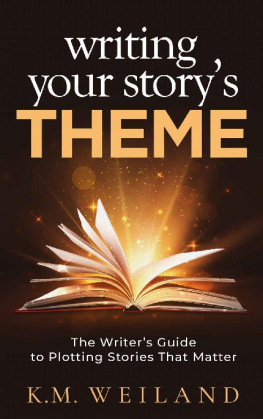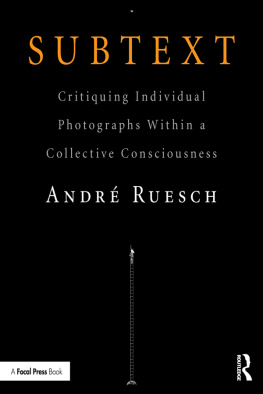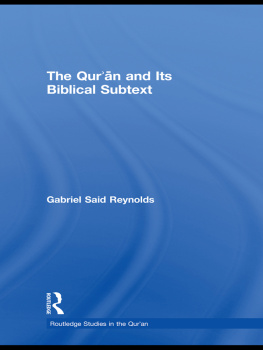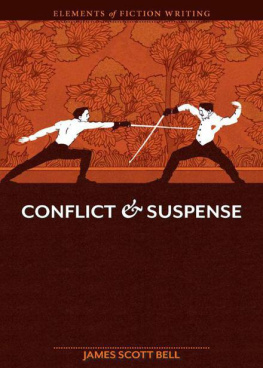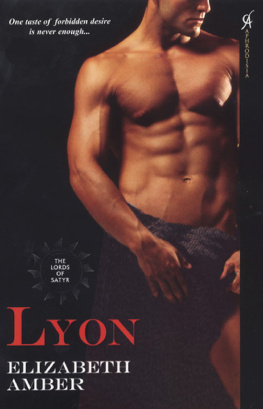Elizabeth Lyon - Writing Subtext: How to Craft Subtext that Develops Characters, Boosts Suspense, and Reinforces Theme
Here you can read online Elizabeth Lyon - Writing Subtext: How to Craft Subtext that Develops Characters, Boosts Suspense, and Reinforces Theme full text of the book (entire story) in english for free. Download pdf and epub, get meaning, cover and reviews about this ebook. year: 2013, genre: Art. Description of the work, (preface) as well as reviews are available. Best literature library LitArk.com created for fans of good reading and offers a wide selection of genres:
Romance novel
Science fiction
Adventure
Detective
Science
History
Home and family
Prose
Art
Politics
Computer
Non-fiction
Religion
Business
Children
Humor
Choose a favorite category and find really read worthwhile books. Enjoy immersion in the world of imagination, feel the emotions of the characters or learn something new for yourself, make an fascinating discovery.
- Book:Writing Subtext: How to Craft Subtext that Develops Characters, Boosts Suspense, and Reinforces Theme
- Author:
- Genre:
- Year:2013
- Rating:4 / 5
- Favourites:Add to favourites
- Your mark:
- 80
- 1
- 2
- 3
- 4
- 5
Writing Subtext: How to Craft Subtext that Develops Characters, Boosts Suspense, and Reinforces Theme: summary, description and annotation
We offer to read an annotation, description, summary or preface (depends on what the author of the book "Writing Subtext: How to Craft Subtext that Develops Characters, Boosts Suspense, and Reinforces Theme" wrote himself). If you haven't found the necessary information about the book — write in the comments, we will try to find it.
Writing Subtext: How to Craft Subtext that Develops Characters, Boosts Suspense, and Reinforces Theme — read online for free the complete book (whole text) full work
Below is the text of the book, divided by pages. System saving the place of the last page read, allows you to conveniently read the book "Writing Subtext: How to Craft Subtext that Develops Characters, Boosts Suspense, and Reinforces Theme" online for free, without having to search again every time where you left off. Put a bookmark, and you can go to the page where you finished reading at any time.
Font size:
Interval:
Bookmark:
WRITING SUBTEXT
How to craft subtext that develops characters, boosts suspense, and reinforces theme
Booklet #1 in a series by
Elizabeth Lyon
2013
Writing Subtext
Copyright 2013
www.elizabethlyon.com
All rights reserved. No part of this booklet may be used or reproduced by any means, electronic, mechanical, photocopying, and recording or in any way that facilitates use or sharing, without written permission of the author, except in the case of brief quotations used in articles and reviews. Please do not encourage electronic piracy. Support author rights.
Cover image by Marilyn Mills, TwinWillows Design
Dedication
For Carolyn J. Rose
who suggested this series
a friend through thick and thin
a person who inspires me
a writer who proves that it pays to never give up
With gratitude for the patience, pondering, and encouragement of my brilliant critique group friends: Barbara Corrado Pope, Faris Cassell, Mabel Armstrong, Kari Davidson, and Geraldine Moreno Black
With special thanks to
Sarah Cypher, The Threepenny Editor
Marilyn Mills, TwinWillows Design
and to the Redditt Foundation
Table of Contents
Your intellect may be confused, but your emotions will never lie to you.
Roger Ebert, movie critic
WRITING SUBTEXT
Subtext is one of the most elusive and powerful elements of craft. Literally meaning what lies beneath the text, it is an undercurrent, a hidden agenda, a vibe, a reinforcement of themeand it exists in what is implied but not explicitly spelled out. It has impact because what you dont say is often more powerful than what you do say.
No wonder its hard to wrap our minds around subtext, much less know how to apply it in our writing. But the pay-offs for learning how to write subtext are great: believable characters with hidden, sometimes complex motivations; increased suspense created by pressurized undercurrents; and a strengthened and unifying theme permeating the fabric of your story.
Hans Christian Andersens The Emperors New Clothes is a fitting example, pun intended. In case you havent read this childrens story lately, heres a summary: Thieves masquerading as master weavers offer the emperor a litmus test to rout out slacker employees: the unworthy will not be able to see the fine new suit. The subterfuge is that while pretending to weave, the thieves stash the expensive gold threads and fine fabrics. First the emperors ministers cannot see the glorious suit on the weavers looms. Theyre incompetent! Their jobs are in peril. Then the emperor himself is shocked when he cannot see it. Is his Highness undeserving of his throne? Like a lot of people currying favor, all of his advisors lie: they pretend they see his suit and launch a cover-up (so to speak), everybody raving about the colors, fabrics, patterns, and beauty of the suit. Not daring to reveal that he is among the dolts who cannot see the suit, the in-the-buff emperor parades before his subjects. A child finally speaks the truth: But the emperor has no clothes!
As The Emperors New Clothes unfolds, readers wonder when someone will say this truth, and bring the obvious into the open. Subtext suggests that the emperor is not only gullible, he is a fool. In the face of the naked truth the emperor doubts himself. Thematically, subtext suggests that it is human nature to go along and hide our vulnerabilities. We are all fools because we can all be fooled.
Although subtext may be new to some writers, human experience is permeated with multiple layers of innuendo, interpretation, and meaning. Toddlers and young children take everything at face value. They must learn how to recognize the signs and symbols of hidden meanings. Im sure some people catch on to subtext early while a small percentage never does figure it out. Others have an acute ability to read peopletheir body language, shifts in tone of voice, and the insinuations behind their words.
All of us have likely experienced stepping into a room of people where we sensed an unusual moodsomething said that we werent privy to. Perhaps we took a moment and noticed that no one was smiling; heads were bowed. We asked or thought, Whats wrong? What happened? We decode the nonverbal messages enough to be alerted to the existence of subtext, even if it takes longer to decipher the meaning behind the body language.
In close friendships and marriages, we send cues that escape the notice of outsiders. A shift in tone of voice, the lift of an eyebrow, a shrug of a shoulder. At some time or another, all of us have withheld what we were really thinking when talking with others, but we may not have been polished actors in hiding our true feelings. Oh how beautiful! Its lovely. Thank you! we say, but think Ive never seen such a hideous knick - knack . Then the gifter, picking up some vibe, sees through the guise and says, If you dont like it, you can exchange it for something else. So often what we think were hiding is in plain sight. We humans run around making assumptions based on subtext we incorrectly or correctly interpret, while at the same time giving out covert messages. And so should our characters.
A QUICK REVIEW OF CRAFT
To navigate the instructions for writing subtext, we all have to be on the same page with the terminology of the craft. If you feel on solid ground with your understanding of the basics, feel free to jump to the next section. Otherwise, here is a quick review of five primary elements of craft: characterization , plot , story , narration , and theme .
Characterization applies to major and minor characters, who must be developed in varying detail, with the most attention paid to characterization of the hero or heroine, i.e., the protagonist. It includes physical description, emotions, thoughts, and actions.
Plot provides forward motion through action toward resolving an important problem introduced in the beginning of a novel or short story.
Story is different from plot. Some teachers define story as synonymous with plot . In casual use it is. But it has a specific function in craft. Every work of fiction has (or should have) an external storyline, the plot, and an internal, psychological storyline, which I am calling story . Plot springs from story, and story reveals why the protagonist takes particular actions in the plot. The answer to why supports theme. For example: An unmarried woman becomes obsessed with adopting a Bulgarian orphan she fell in love with even though the country finds her marital status unacceptable. That outlines the plot. However, the same woman, whose mother abandoned her as a youngster, will stop at nothing to adopt the child who fulfills her own need for being taken care of. That explains her actions by supplying the internal, psychological story. Notice how the sentence describing the plot creates visual pictures; you can begin to conjure scenes. The sentence describing story is thematic; it conveys the underlying psychological need that drives the mother.
Narration , simply put, includes all forms of telling, not to be confused with the word narrative, which means the story. Narration is a whopper category that includes information, description of characters and setting, flashback summaries, thought, and the sad, mad, glad emotions as well as the fight, flight, excite reactions. You may have heard the writers mantra show dont tell. Show means plot action and tell means narration. All together, you have produced the narrative of your story, told by narratorsthe protagonist, other viewpoint characters, and sometimes the author. When used well, narration adds depth, but when overused, telling tempts the reader to skip portions of your book.
Theme is meaning, the message that readers contemplate before and after they finish the last word. Theme may be expressed in one word such as love or justice, or it may be expressed in a line such as Redemption is only possible by forgiving oneself, or in the biggest clich of all, Love conquers all.
Next pageFont size:
Interval:
Bookmark:
Similar books «Writing Subtext: How to Craft Subtext that Develops Characters, Boosts Suspense, and Reinforces Theme»
Look at similar books to Writing Subtext: How to Craft Subtext that Develops Characters, Boosts Suspense, and Reinforces Theme. We have selected literature similar in name and meaning in the hope of providing readers with more options to find new, interesting, not yet read works.
Discussion, reviews of the book Writing Subtext: How to Craft Subtext that Develops Characters, Boosts Suspense, and Reinforces Theme and just readers' own opinions. Leave your comments, write what you think about the work, its meaning or the main characters. Specify what exactly you liked and what you didn't like, and why you think so.




